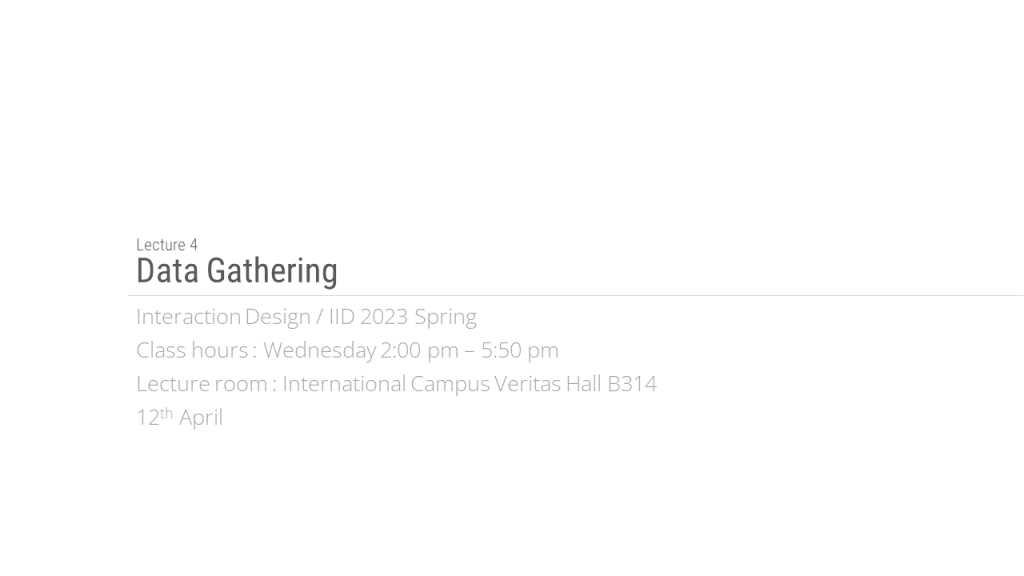
References
Jenny Preece, Helen Sharp, and Yvonne Rogers (2019) Interaction Design: Beyond Human-Computer Interaction, 5th Edition, Wiley, Chapter 7.
AI Paragraph (experimental feature from wordpress.com)
In Lecture 4, we delved into the fascinating topic of data gathering. As interaction designers, we must continuously gather information about our target audience, their needs, and their behaviors to create meaningful solutions.
There are various methods that we can use to gather data, from surveys and interviews to observations and analytics. Each method has its strengths and weaknesses, and we must carefully consider our research goals when choosing the most appropriate method.
One crucial aspect of data gathering is ensuring the data we collect is accurate and reliable. We must take steps to avoid biases, such as sampling errors or leading questions, that may skew our findings. Additionally, we need to analyze and interpret the data collected effectively to draw meaningful insights that inform our design decisions.
Data gathering is a continuous process throughout the design cycle, and we need to be open to revisiting our research and making adjustments as we go. By doing so, we can create truly user-centered experiences that meet the needs of our target audience.
As we conclude this lecture, let’s keep in mind the wise words of Jenny Preece, Helen Sharp, and Yvonne Rogers. “Data gathering should be viewed as a collaborative, iterative process in which participants are given the opportunity to contribute through their feedback and experiences.” With this in mind, let us strive to create user-centered designs that positively impact people’s lives.
There are various methods that we can use to gather data, from surveys and interviews to observations and analytics. Each method has its strengths and weaknesses, and we must carefully consider our research goals when choosing the most appropriate method.
One crucial aspect of data gathering is ensuring the data we collect is accurate and reliable. We must take steps to avoid biases, such as sampling errors or leading questions, that may skew our findings. Additionally, we need to analyze and interpret the data collected effectively to draw meaningful insights that inform our design decisions.
Data gathering is a continuous process throughout the design cycle, and we need to be open to revisiting our research and making adjustments as we go. By doing so, we can create truly user-centered experiences that meet the needs of our target audience.
As we conclude this lecture, let’s keep in mind the wise words of Jenny Preece, Helen Sharp, and Yvonne Rogers. “Data gathering should be viewed as a collaborative, iterative process in which participants are given the opportunity to contribute through their feedback and experiences.” With this in mind, let us strive to create user-centered designs that positively impact people’s lives.